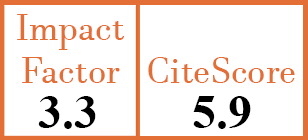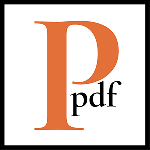Full Papers
High mobility group box-1 (HMGB-1) in osteoarthritic cartilage
T. Heinola, V.-P. Kouri, P. Clarijs, H. Ciferska, A. Sukura, J. Salo, Y.T. Konttinen
CER297
2010 Vol.28, N°4
PI 0511, PF 0518
Full Papers
Free to view
(click on article PDF icon to read the article)
PMID: 20659415 [PubMed]
Received: 20/03/2009
Accepted : 22/03/2010
In Press: 30/08/2010
Published: 30/08/2010
Abstract
OBJECTIVES:
Nucleosomal high mobility group box-1 (HMGB-1) is translocated and released from necrotic and activated cells as an endogenous danger signal (alarmin) and cytokine. It was hypothesised that it plays a role in osteoarthritis (OA). characterised by cellular activation, inflammation and enchondral bone formation.
METHODS:
Bovine knee joint samples, collected from culled animals, were scored using histologic/histochemical grading to intact looking, mild, moderate or severe and immunohistochemically stained for HMGB-1. Chondrocyte pellets, produced from human bone marrow-derived mesenchymal stem cells and stimulated with tumour necrosis factor-a (TNF-α), were similarly stained.
RESULTS:
In healthy looking OA cartilage chondrocyte nuclei were usually HMGB-1 negative and in mild OA staining was restricted to nuclei. In moderate OA lesions HMGB-1 was also seen in the cytoplasm and occasionally pericellular matrix and in severe OA lesions often also in intra- and inter-territorial matrix. The tidemark in healthy cartilage did not contain HMGB-1, which however was seen at this interface as linear deposits even in intact-looking and mild OA lesions, as multiple wave-like deposits in moderate and as heavy granular deposits in severe lesions. TNF-α stimulation of chondrocytes caused translocation of HMGB-1 from the nucleus to the cytoplasm.
CONCLUSIONS:
In resting chondrocytes tight nucleosomal HMGB-1 binding might cause steric hindrance of immunostaining. TNF-α- or OA-mediated activation leads to nuclear staining and cytoplasmic translocation. Advancing OA leads to increasingly intense extra-/pericellular deposition of HMGB-1 alarmin, indicating local chondrocyte activation and/or necrosis. In particular, HMGB-1 at the tidemark might play a role in the pathological thickening of subchondral bone plate/osteophyte formation.


